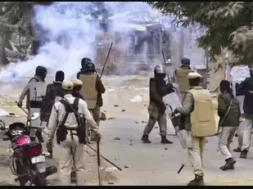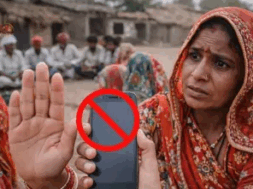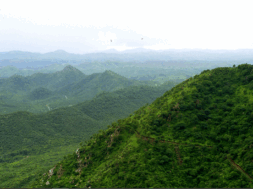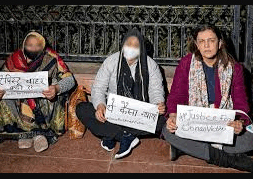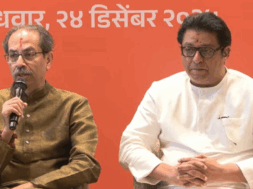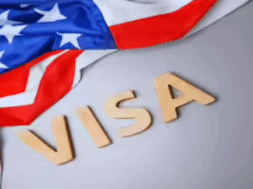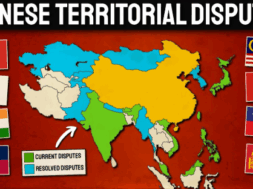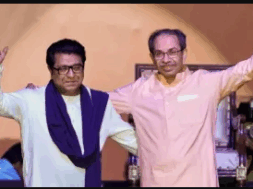
Democracy: At Rs. 1,400 per vote, the LS 2024 election to cost Rs. 1.35 trillion
Virendra Pandit
New Delhi: The festival of democracy comes with a cost and is often seen as an expensive exercise to keep an elected government in power.
The ongoing Lok Sabha 2024 elections in India, spread over 45 days and seven phases between April and June to elect 543 representatives, will be the most expensive democratic exercise ever worldwide, costing a whopping Rs. 1,35,000 crore.
According to N. Bhaskara Rao, founder-chairman of the Centre for Media Studies (CMS), a not-for-profit organization tracking election spending for 35 years, the estimated expenditure is expected to more than double from Rs. 60,000 crores in 2019 to a staggering Rs 1.35 lakh crore this year, the media reported on Friday.
This encompasses all spending, direct or indirect, related to polls, including that by political parties and organizations, candidates, the government, and the Election Commission of India (ECI).
With the ruling BJP vying for a third consecutive term under Prime Minister Narendra Modi’s leadership, industry observers have noted the party’s dominant presence in campaigns, irrespective of the mediums used for publicity.
He said he revised the initial expenditure estimate from Rs 1.2 lakh crore to Rs 1.35 lakh crore, factoring in electoral bond disclosures and accounting for all election-related expenses.
“Initially, we estimated the expenditure at Rs 1.2 lakh crore. However, post the electoral bond stake disclosures, we’ve revised it to Rs 1.35 lakh crore,” he said, adding that this estimate covered spending that took place 3-4 months before election schedules were announced.
Recent observations by the Association for Democratic Reforms (ADR) revealed a “significant lack of transparency” in political funding in India.
From 2004-05 to 2022-23, nearly 60 percent of contributions to the nation’s six major political parties, totaling Rs 19,083 crore, came from undisclosed sources, including funds from electoral bonds, it claimed.
The ADR has, however, refrained from providing any cumulative expenditure projections for the ongoing Lok Sabha elections.
Pre-election activities are integral to campaign spending by parties and candidates, covering political rallies, transportation, hiring of workers including field and influencers, and even the controversial horse-trading of political leaders, Rao said.
The ECI’s budget to manage the polls is expected to be 10-15 percent of the total expenditure projection, he added.
With a voter base of 96.6 crore, per-voter spending is estimated at around Rs 1,400. This surpasses the expenditure of the 2020 US elections, which stood at USD 14.4 billion or Rs 1.2 lakh crore, according to OpenSecrets.org, a nonprofit organization based in Washington, DC, that tracks and publishes data on campaign finance and lobbying.
Media campaigns across various platforms are predicted to account for 30 percent of the total election spend, Rao said.
While visible spending is concentrated in the 45-day direct campaign period, the actual expenditure far exceeds this amount, he added.
Parties and candidates often find ways to circumvent spending restrictions imposed by the Model Code of Conduct (MCC). In 2019, the CMS reported that the BJP accounted for 45 percent of the total spending of Rs 60,000 crore, a share that Rao believes will increase in the 2024 elections.
In his latest book, “Next Big Game Changer of Elections,” Rao highlighted the growing reliance on money power’ over ideology in Indian politics.
He lamented the transformation of election campaigns from ideology-driven movements to jingoistic apparatuses that leverage demographics to create divisive tactics and polarization.
Rao identified six key trends in the ongoing general election — prolonged pre-poll activities, affluent candidates dominating the fray, the Mandi phenomenon of political crossovers, manipulation through various channels, lack of fair play, and the power dynamics favoring incumbents.
As digital campaigning gains prominence, political parties are engaging professional agencies for higher brand recall.
Amit Wadhwa, CEO of leading advertising agency Dentsu Creative, said that there has been a significant surge in digital campaigning this year.
He said political parties were behaving like corporate brands and were engaging professional agencies for higher brand recall.
With the inclusion of both direct and indirect digital campaigns, this medium’s footprint is poised to become the mainstay, potentially outshining all others in this election. Television, digital platforms, and outdoor advertising are ahead, relegating print to fourth place, he projected, based on his observations.
Voters unaffiliated with any political ideology, referred to as ‘fence-sitters,’ are the primary targets of the intense visual campaigns launched by parties across various media.
Social media giants like Meta and Google also play significant roles in political campaigns.

